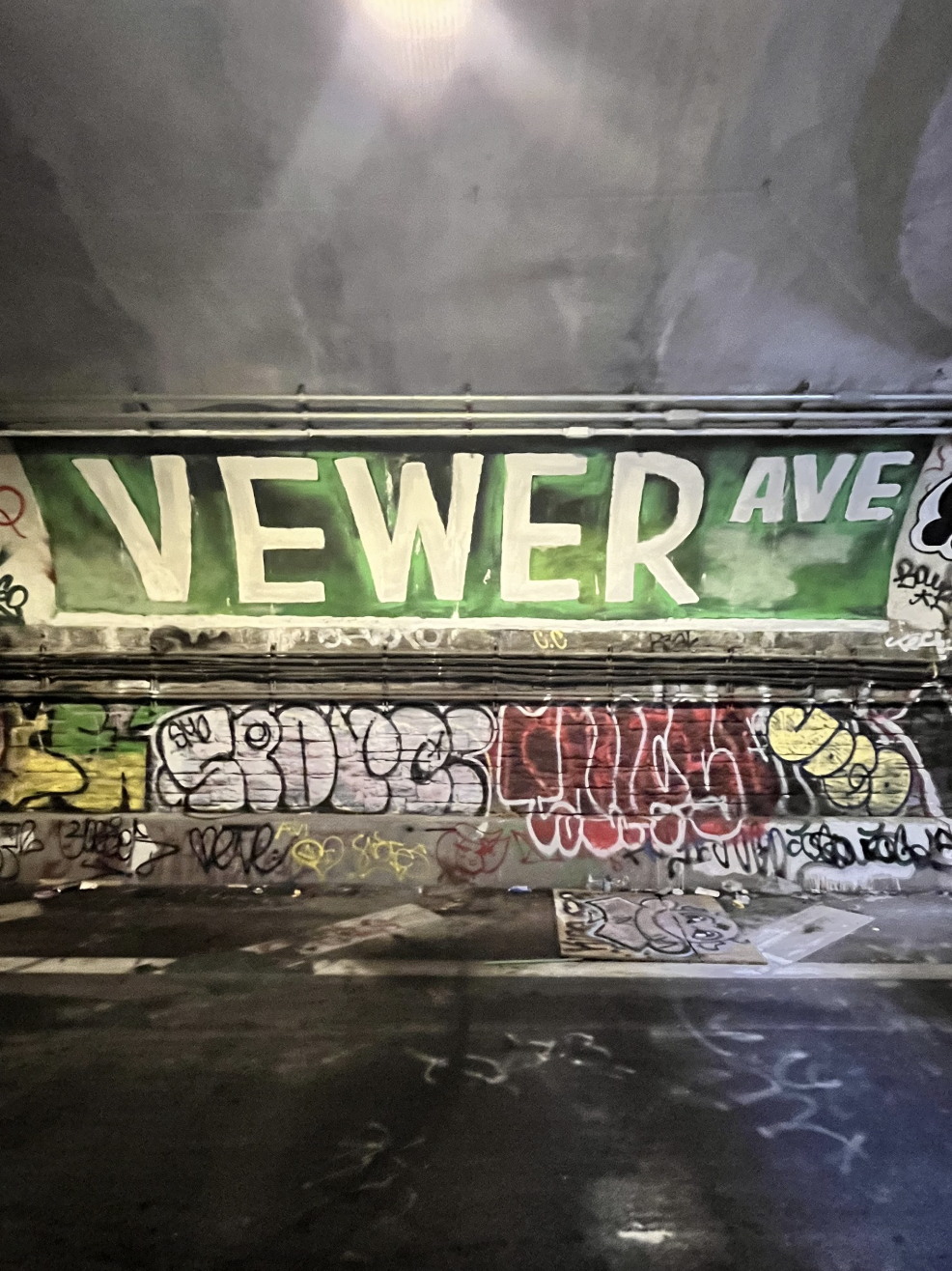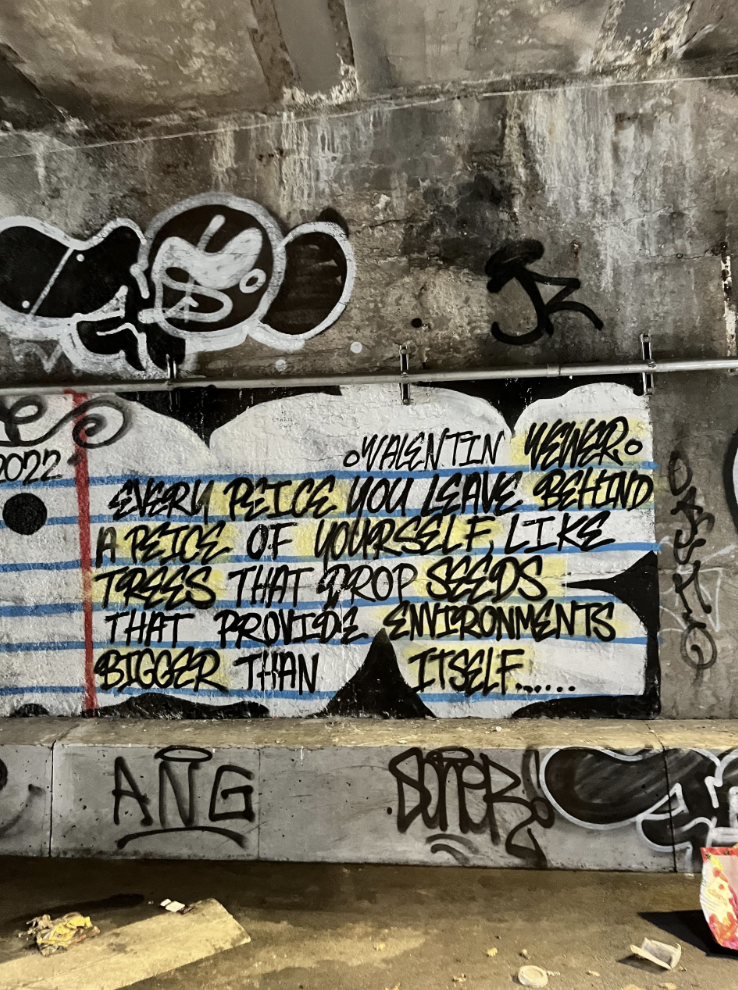Park Avenue’s Tunnel Vision
Have you seen the well-to-do?
Up and down Park Avenue
On that famous thoroughfare
With their noses in the air.
– Puttin’ on the Ritz, Irving Berlin
Park Avenue is certainly among the world’s most elite streets, home to some of the world’s wealthiest people, the 1% of the 1% you might say. In the Murray Hill section of Manhattan, Park Avenue is dominated by offices and commercial spaces and by the hordes of commuters and tourists coming and going every day from Grand Central Terminal.
The section of the fabled street just below 42nd Street, where Grand Central blocks the road forcing traffic to go around via the Park Avenue viaduct, is among Manhattan’s busiest pedestrian thoroughfares. The perfect place for some art.
That’s exactly what Patrons of Park Avenue (POPA) had in mind when they started featuring art installations on the Park Avenue Malls, as the medians that divide uptown and downtown traffic along the road are called. Right now, in POPA’s second go at it, the installation features nine monumental, hyperrealistic summertime sculptures by the renowned New York sculptor Carole A. Feuerman.
Photo by Nicole ABE Titus
But like everything in the nonlinear world of art in New York City, the fine art displayed along Park Avenue is only part of the story, the above ground part. Yes, even Park Avenue has its underground, quite literally, and this one has a distinct downtown edge to it. Just feet from Feuerman’s handsome sculptures of comely swimmers and divers is one the city’s most impressive street art destinations. Where? Straight down, of course.
Welcome to what has become known as the Vewer Tunnel, a 1,600-foot long abandoned tunnel that runs under Park Avenue from 33rd Street to 40th Street, almost the exact stretch of the Feuerman installation. Taken together, the sanctioned, fine-art installation on the street and the transitory, outlaw work in the shadowy tunnel below may represent a microcosm of the New York City art scene. Or it could be just a fortunate comingling of shiny and sophisticated with gritty gutsy. Whatever, it makes for a pretty cool binary tour of what are generally art world antagonists. Pedestrians are supposedly banned from the tunnel, which has largely unobstructed entrances at 33rd and 40th, but let’s just take that as a suggestion, like bans on graffiti and street art.
Photo courtesy of Carole Feuerman
This midtown mashup of art extremes came into being over the past year as Feuerman and graffiti/street art virtuoso Vewer both zeroed in on the Murray Hill neighborhood as home to their next respective installations. As Feuerman’s sculptures were being prepared in her Brooklyn studio, Vewer was working his painterly magic alone in the chilly ambience of the darkened tunnel.
Vewer was already well known for his work in Freeman Alley and monumental works on surfaces ranging from train platforms, to waterway bulkheads, to bridges, when the idea of claiming the tunnel as his latest canvas occurred to him.
“I would bike through this empty tunnel routinely during the pandemic. Never thought about hitting it until I saw a few random outlines and I would go there to piss or smoke and I was like ‘you know what, let me do a piece here,’” he told UP Magazine.
Once he started, the ambitious and driven artist just couldn’t stop.
Photo by Nicole ABE Titus.
“The first one was the winter wars piece. Then I literally had a dream of me taking it over and I started the mission to take it over with as many pieces as I could … .I became obsessed. I was there every other day, different hours, just painting my ass off,” he said.
The work is impressive to say the least. Among the two dozen pieces he completed in the early days are the huge pink VEW that greets visitors at the 33rd Street end of the tunnel, the aforementioned winter wars piece that includes an ice bound Statue of Liberty, a giant blue and white tile-like THE VEWER TUNNEL and a monumental green and white street sign that says Vewer Ave on it.
For the first weeks, Vewer had the tunnel to himself, working solo as always. Then, word got out, attracting new graffiti writers, curious photographers, and social media posters.
“I had this empty tunnel to myself for five weeks until toys (inexperienced graffiti writers) and photographers got wind of what I was doing and ruined my initial plan to take it over. People started to paint it, so, to avoid any drama or having people go over my work for going over theirs, I decided to end it at 23 pieces,” Vewer said.
Today, there is barely an inch of unpainted real estate in the tunnel from end to end and, while many, many writers have added to the tunnel over the months, it is still widely known as the Vewer Tunnel.
Photo by Nicole ABE Titus.
“I was consumed by trying to fill the entire space up with just my pieces. But obviously, with photographers being fiends for likes, they had to post and then writers got wind and came to do graffiti there, so you know how that goes. I tried to contain it as much as I could, but grateful I had five weeks to myself in there,” Vewer said.
Not surprising at all is that Vewer’s principal inspiration for the project was the Freedom Tunnel, the 2.6 mile tunnel that runs below the Upper West Side’s Riverside Park from 72nd Street to 124th Street. That tunnel, named in honor of the work of graffiti artist Chris “Freedom” Pape, was likewise consumed by street art until its owner, Amtrak, began aggressively limiting access, cleaning and painting over the work in 2009.
Vewer said the Park Avenue tunnel was just there for the taking, it wasn’t like he was looking for prestigious real estate for his work: “The location was just a plus. Like, wow, out of all places, Park Avenue,” he said.
The unlikely pairing of underground graffiti art with her own above-ground fine art creations came as a bit of surprise to sculptor Carole Feuerman, who is used to having her hyperrealistic sculptures displayed in prestigious settings like galleries, museums, and public spaces in Milan, Venice, Rome, Saint-Tropez, Paris, Naples, Beijing, and many other places.
Photo by Nicole ABE Titus.
“I started to think about the contrast between the two,” Feuerman told UP Magazine. “I have friends who are street artists and I respect that. But hyperrealism and street art, they’re pretty opposite,” she said.
Feuerman’s installation, Sea Idylls, includes representations of women and men engaged in summer activities, like swimming and diving. Feuerman, one of the founders of the hyperrealism art movement, said her sculptures are more than mere representations of people doing things. So, like street art, her works carry a message. Unlike street art – which often confronts viewers with meaning, spelling it out in giant words – the meaning in her sculptures can be a bit more subtle.
One piece, for example, called Survival of Serena, is a perfect depiction of a beautiful woman clinging to a colorful inner-tube. Serena might evoke thoughts of summer vacations; weekends in the Hamptons; lazy, sunlit intermissions of leisure and repose. But Feuerman explained that Serena was not modeled on some silk-stocking bathing beauty, but rather on one of the many refugees who fled Cuba for the U.S. on all manner of floatation devices decades ago.
Photo courtesy of Carole Feuerman.
“If you look at the total aspect of my work, I only make sculptures that have meaning; they are more than just a reproduction of the person. It isn’t important to reproduce what the person looks like, it’s important that the piece has meaning. I want to get my point across with the sculpture,” she said.
Of course, Feuerman’s work and that of Vewer differ greatly in method, intent and appeal, but taking them in at the same time demonstrates the breadth and diversity of art in New York City and generally.
The scene on Park Avenue and below it may not offer a perfect microcosm of the New York art world, but the serendipitous showcasing of extremities could make a broader statement about the importance of diversity and coexistence in the art world and beyond.







